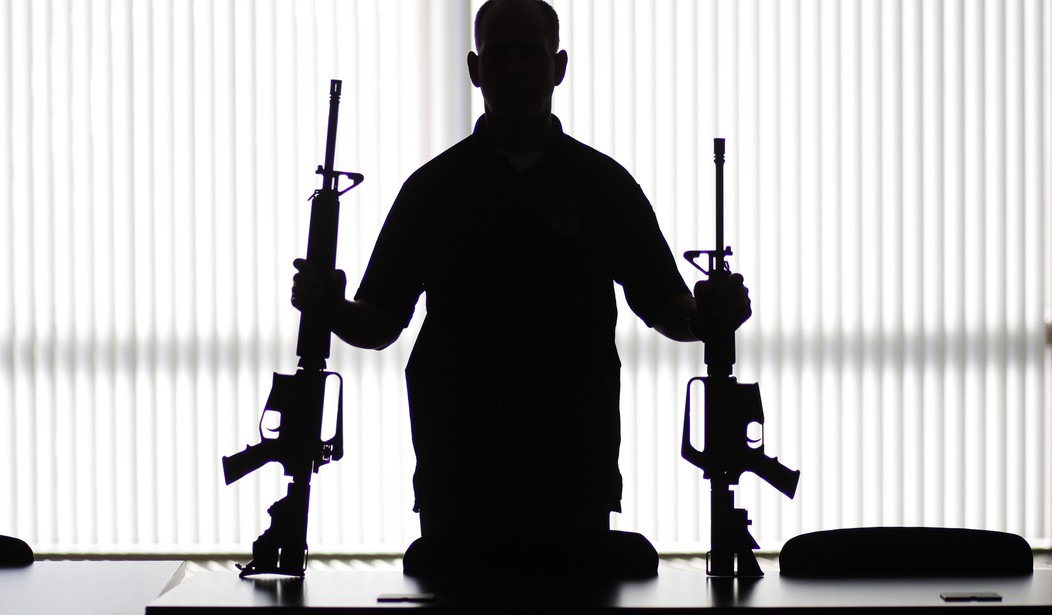For a while now, the media has been freaking out about so-called ghost guns. They’ve acted like they’re the greatest scourge to ever face our nation, and they make damn sure everyone thinks that.
At least, everyone who hasn’t looked at the actual numbers.
The truth is, unserialized firearms account for only a small fraction of the total firearms used by criminals each year, and many of those are traditionally manufactured firearms with defaced serial numbers.
But you couldn’t tell the Washington Post editorial board that.
Do-it-yourself has never been easier; just ask the owners of any of the more than 25,785 ghost guns seized nationwide last year. The internet has made it simple for Americans of all ages (and criminal records) to purchase firearm-making kits at discount prices. The result is a national crisis.
Out of how many total firearms?
See, that sounds like a scary number, but when you think about all the gun-related arrests made by police in 2022, you start to realize that’s a drop in the proverbial bucket.
As such, it’s kind of hard to see it as a national crisis when so many people of all ages are also getting their hands on traditionally manufactured guns despite the myriad of gun control laws already on the books.
Moving on…
The Post reported this month on a rash of crimes using unlicensed, unserialized weapons: from an 18-year-old in Springfield, Va., who stormed into a garage during a fistfight and killed two unarmed 17-year-olds; to two teens in Brooklyn Park, Minn., who tried to shoot someone outside their car and killed their friend inside it instead; to a 16-year-old in New Rochelle, N.Y., who created a “factory” for firearms in his bedroom last year before killing one of his peers. The Bureau of Alcohol, Tobacco, Firearms and Explosives has connected ghost guns to 692 homicides and fatal shootings through 2021. But authorities can’t link the guns to suspects, because they have no serial numbers to identify them.
And if those guns were stolen–as most are–or sold by the original owner before somehow ending up in the bad guys’ hands, then they still can’t link the guns to suspects.
Funny that, ain’t it?
The media makes an awful lot about the inability to train so-called ghost guns, but they really don’t every mention the fact that tracing really can just help the police figure out who bought the gun originally. If that person sells it, the trail often runs cold. Even in universal background states, they may not remember which FFL conducted the transfer.
Again, the tracing effort isn’t guaranteed even on store-bought guns, so it’s not like police can’t solve crimes without it.
The spectral nature of these weapons is a selling point for criminals who don’t want to get caught. It also helps those who can’t buy guns from licensed dealers. That includes people who would fail background checks, such as convicted felons or violent extremists. And it includes people too young to own guns legally. Manufacturers’ ability to ignore the usual rules surrounding firearms sales depends on a regulatory loophole: They argue they’re not selling guns at all. Instead, they market “frames,” for handguns, and “receivers,” for rifles — each of these constituting 80 percent of a gun rather than a gun in its entirety.
No, that’s not quite how it works.
They’re not receivers or frames because they still need work in order to become such a thing. That’s not a loophole, either, because there always has to be some kind of a line as to what is a receiver and what isn’t. What these companies do is create a product that falls short of that.
If you move the line, they’ll simply create a product that is short of the new line.
Yet what the editorial board here is missing is that even if you kept them from making any such receiver, this is the world of the 3D printer. People can just make their own receivers in the privacy of their own homes.
The “ghost gun” loophole they’re so worked up about isn’t a loophole so much as a fact of nature, but even if it were, any hopes of closing it are as big of a lost cause as completely disarming criminals in general.
They can complain about the problem, but it’s clear they don’t know what they’re talking about. That’s why editorials shouldn’t be given nearly as much weight as they’ve historically been given. The editorial boards are generally journalists who think they understand the issue but generally know less than your average layman on most.
This is a prime example.








Join the conversation as a VIP Member